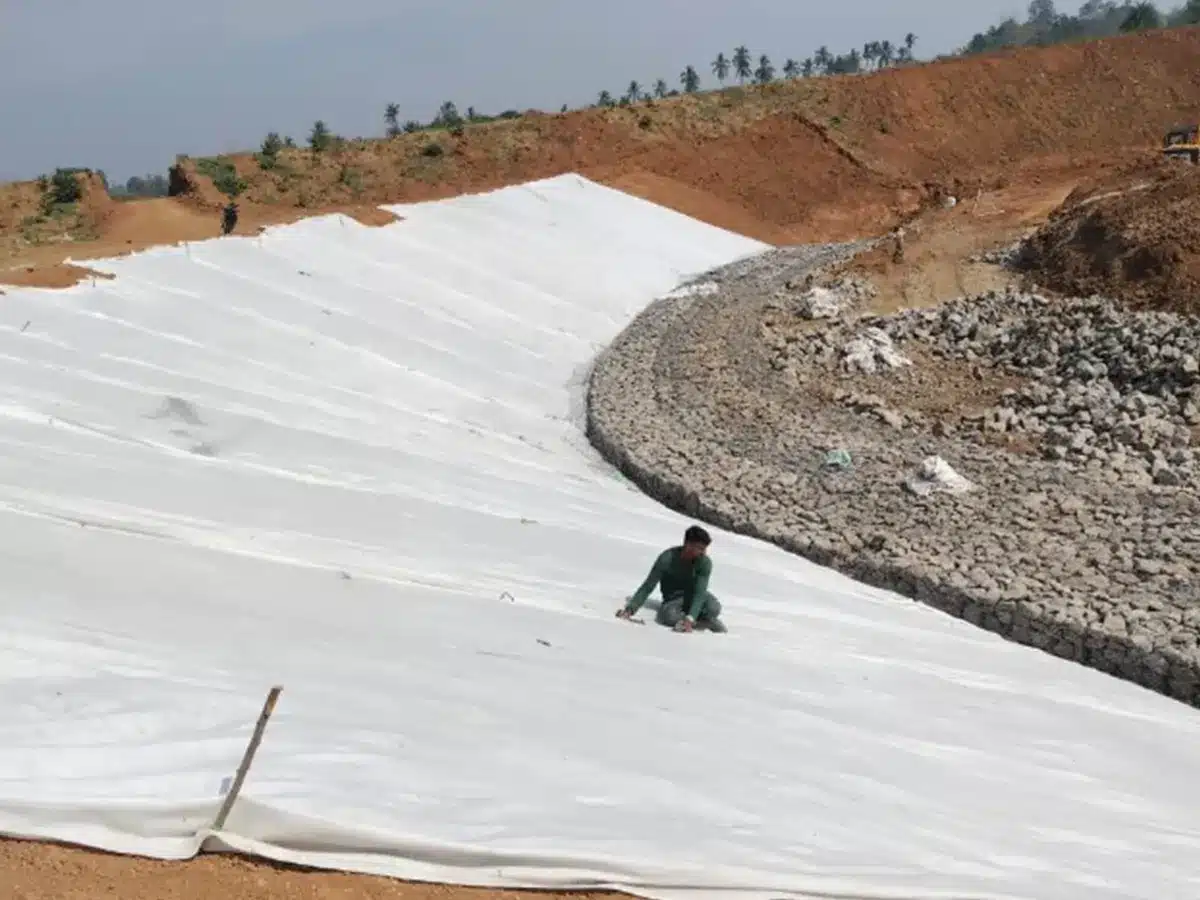+86-159 9860 6917
info@geofantex.com
geofantex@gmail.com
+86-400-8266163-44899
Geotextile filters are innovative materials that play a crucial role in various civil engineering and environmental applications. Used primarily for soil separation, drainage, and filtration, geotextile filters help maintain the integrity of construction projects by preventing soil erosion while allowing water to pass through. These filters are essential in a wide range of infrastructure projects, including road construction, landscaping, and water management systems. This article will answer key questions about geotextile filters to better understand their functionality, importance, and application.
What is a geotextile filter?
A geotextile filter is a permeable fabric made from synthetic materials such as polypropylene or polyester. Its primary function is to allow the passage of water to enter a drainage media (such as gravel or a geosynthetic) while preventing soil particles from doing so. In engineering terms, geotextile filters are used in applications where drainage and soil separation are critical. These materials act as barriers that separate different types of soil or aggregate while still permitting the free movement of water.

What are the filter criteria for geotextiles?
The performance of geotextile filters is determined by several filter criteria, which include the permeability criterion, retention criterion, porosity criterion, and thickness criterion.
- Permeability: The geotextile must have high permeability to allow water to flow through it while preventing the movement of soil particles. This is often measured by the fabric’s flow rate or the coefficient of permeability.
- Particle Retention: The geotextile must have the ability to retain soil particles that are larger than the fabric’s pore size, thus preventing clogging or soil migration. This is typically tested using ASTM standards, such as ASTM D4751, which defines the fabric’s apparent opening size (AOS).
- Porosity: The fabric must have sufficient porosity to facilitate water flow, while still maintaining its ability to retain soil particles. This is an important factor in ensuring the long-term performance of the geotextile in filtration applications.
- Thickness: The fabric should be thick enough to ensure proper filtration but not so thick that it becomes less permeable. This balance is essential for maintaining both durability and filtration efficiency.
Can water pass through geotextile fabric?
Yes, water can pass through geotextile fabric, which is one of its most important features. When a geotextile membrane is used, water passes through the membrane, and its permeability varies depending on the type, density, and structure of the fabric. In general, geotextiles are designed to allow water to flow freely through them. This makes geotextile filters ideal for drainage systems, as they prevent the clogging of soil while permitting the free flow of water.
The ability of geotextile filters to let water pass through is key to their role in separating soil layers, preventing erosion, and promoting effective drainage in projects such as road construction and landfills.
What is the thickness of the geotextile filter fabric?
The thickness of geotextile filter fabric can vary based on the specific requirements of the project and the type of geotextile used. Typically, the fabric comes in weights of 2 oz, 4 oz, 6 oz, and 8 oz per square yard, with the thickness ranging from 0.1 mm to several millimeters, depending on the application. In most cases, the fabric is designed to balance durability and permeability, meaning the thickness is chosen to prevent soil migration while allowing water to flow through efficiently.
For example, in soil filtration and drainage applications, thinner geotextiles, such as 2 oz or 4 oz fabrics, are preferred to maximize water flow. However, for applications such as slope stabilization or erosion control, thicker geotextiles, such as 6 oz or 8 oz, may be used to provide additional strength and durability.
Geotextile filters are essential materials in modern engineering, providing an effective solution for soil separation, drainage, and filtration. By allowing water to pass through while preventing soil migration, geotextiles play a pivotal role in maintaining the integrity of infrastructure projects. Understanding the filter criteria, permeability, and thickness of geotextile fabric is crucial for selecting the right material for specific applications. Whether used in road construction, drainage systems, or erosion control, geotextile filters continue to prove their value in a variety of civil engineering projects.



Get Free Sample
We’ll respond as soon as possible(within 12 hours)






















